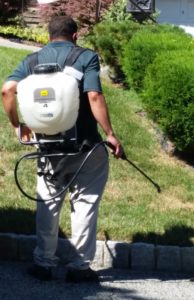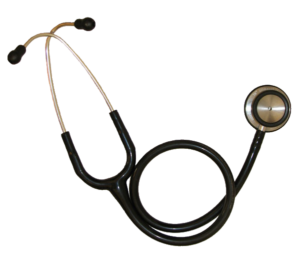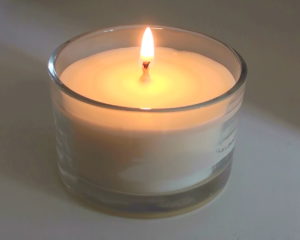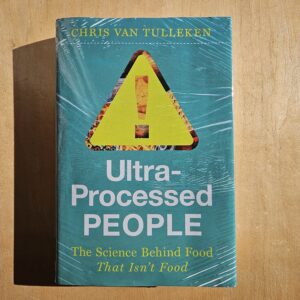 The US is awash in pesticides - whether used on farms, in homes, on lawns, right-of-ways, on flea collars, etc., etc. They are used for specific reasons (e.g., to kill specific pests or weeds), but they also cause harms. People have more exposure to pesticides than they realize, and this results in health harms, especially to children and during pregnancy.
The US is awash in pesticides - whether used on farms, in homes, on lawns, right-of-ways, on flea collars, etc., etc. They are used for specific reasons (e.g., to kill specific pests or weeds), but they also cause harms. People have more exposure to pesticides than they realize, and this results in health harms, especially to children and during pregnancy.
For example, people are exposed when there is drifting of pesticides to non-target areas when applied, or there is contamination of drinking water, or from the pesticide residues in the foods we eat, touching dogs wearing flea collars, or when children play on treated lawns.
A large study found that exposure to multiple pesticides results in an increased risk of childhood cancers - brain cancer by 36%, leukemia rates by 23%, and overall pediatric cancer rates by 30%. The study was done in Nebraska, the state with the second highest cancer rates. Many scientists, and also researchers of the study, believe this is from extensive use of multiple pesticides on crops.
Unfortunately, the government only looks at exposure to one chemical at a time - not the mixtures we are exposed to on a daily basis. Also, the most toxic pesticides (dicamba, paraquat, glyphosate) are more regulated or banned in Europe, but not in the US. (Remember: $$$ first in the US).
Simple steps you can do to lower your pesticide exposure: 1) Eat as many organic foods as possible. Pesticide levels in the body will rapidly go down. 2) Use non-toxic Integrated Pest Management (IPM) or organic methods for pest problems. 3) Don't use pesticides on the grounds where you live. View lawns as having wildflowers (bee habitats!) and not weeds. 4) Take your shoes off at the door (so you don't track in pesticides). 5) Use some sort of water filter for drinking water if you suspect that there are pesticides in your water.
From The Guardian: Exposure to combination of pesticides increases childhood cancer risk – study
Exposure to multiple pesticides significantly increases the risk of childhood cancers compared with exposures to just one pesticide, first-of-its-kind research finds, raising new fears that children are more at risk to the substances’ harmful effects than previously thought. ...continue reading "Exposures to Pesticides and Childhood Cancer Risk"
 An interesting in-depth book about the air we breathe and all the microbes in it was recently published. There are multitudes of microbes (viruses, bacteria, fungi) hidden in our air. We can't see them, but they are there. The book Air-borne: The Hidden History of the Life We Breathe is by award winning author Carl Zimmer.
An interesting in-depth book about the air we breathe and all the microbes in it was recently published. There are multitudes of microbes (viruses, bacteria, fungi) hidden in our air. We can't see them, but they are there. The book Air-borne: The Hidden History of the Life We Breathe is by award winning author Carl Zimmer.

 What foods to avoid or to eat has long been debated in chronic kidney disease treatment. Traditionally, people with chronic kidney disease (CKD) have been advised to avoid a number of fruits and vegetables. In contrast, a recent
What foods to avoid or to eat has long been debated in chronic kidney disease treatment. Traditionally, people with chronic kidney disease (CKD) have been advised to avoid a number of fruits and vegetables. In contrast, a recent 
 Some people have unexplainable or mystery illnesses - whether it is unknown what exactly they have, but also how to treat the rare disease. And if somehow a doctor figures out how to treat the disease, then they may not know how to get the word out to other medical professionals. But it turns out there is a way to tell others this valuable information -
Some people have unexplainable or mystery illnesses - whether it is unknown what exactly they have, but also how to treat the rare disease. And if somehow a doctor figures out how to treat the disease, then they may not know how to get the word out to other medical professionals. But it turns out there is a way to tell others this valuable information -  Of course scented products (air fresheners,
Of course scented products (air fresheners,  There is much concern with the amount of highly or ultra-processed foods the typical American eats - over 50% of the calories eaten daily! A very good book about ultra-processed food is
There is much concern with the amount of highly or ultra-processed foods the typical American eats - over 50% of the calories eaten daily! A very good book about ultra-processed food is 
 The US is awash in pesticides - whether used on farms, in homes,
The US is awash in pesticides - whether used on farms, in homes, 